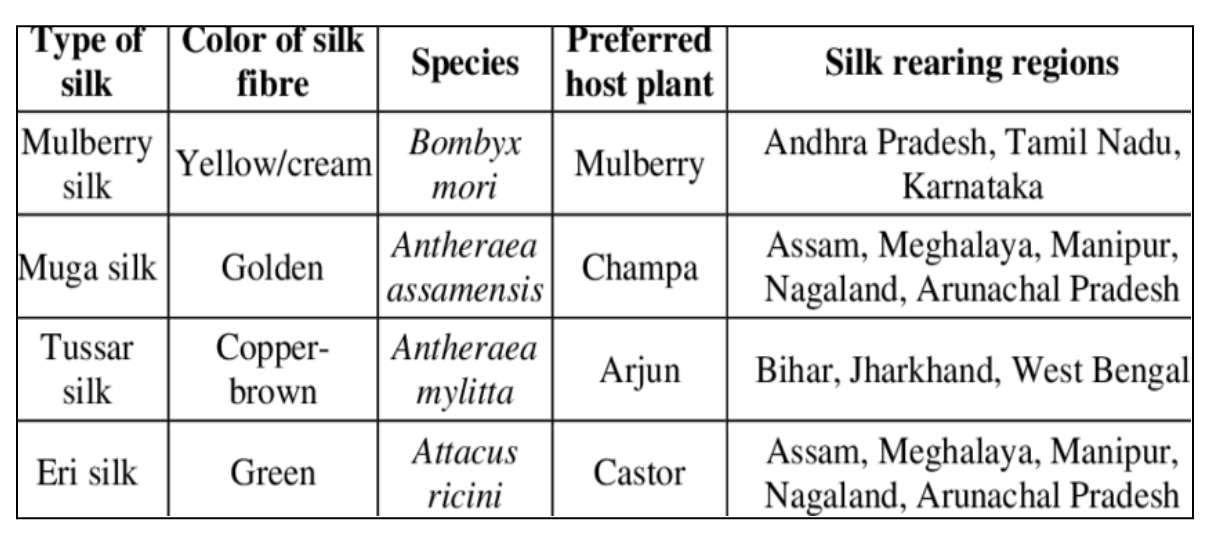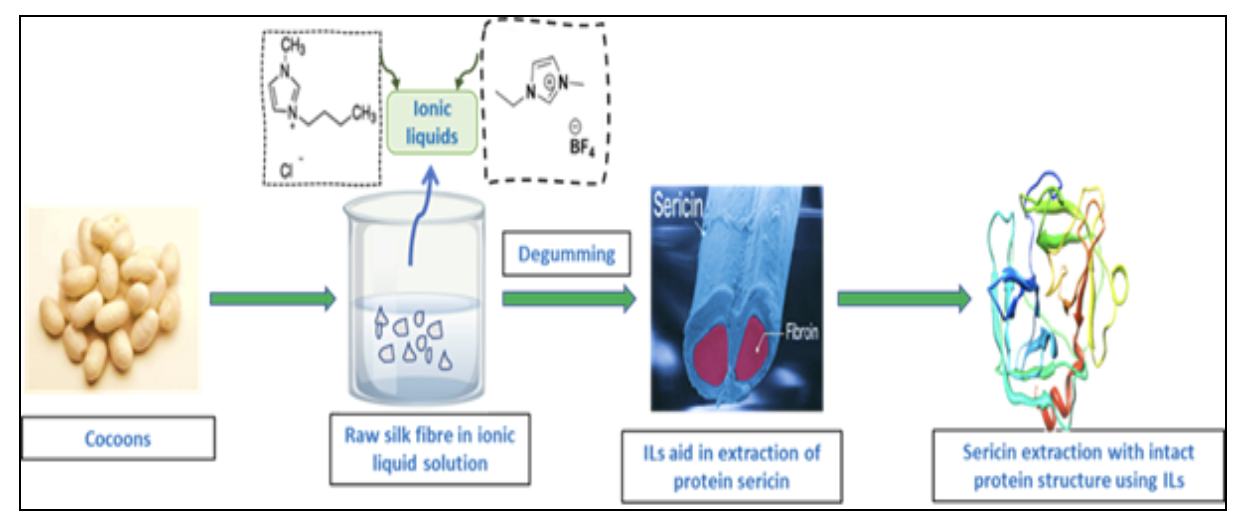News Excerpt
Ionic Liquids (ILs) which can be promising sustainable alternatives to the toxic chemicals currently in use for the silk protein extraction process has been identified by researchers at Institute of Advanced Study in Science and Technology (IASST) Guwahati.
More about the research:
- Researchers have discovered an eco-friendly method to replace toxic chemicals traditionally used in silk processing.
- The conventional process involves harmful substances like sodium carbonate, sodium hydroxide, sulfuric acid, and lithium bromide to extract silk proteins, fibroin, and sericin from raw silk fibres.
- This is a crucial step in transforming cocoons into silk.
Findings of the Research
- The study, published in Chemistry Select by Wiley Publishers, explores six different ILs, revealing some that are particularly effective in removing sericin without damaging the silk protein structure.
- The most promising ILs identified include: 1-Butyl-3-methylimidazolium chloride (BMIM.Cl), 1-ethyl-3-methylimidazolium tetrafluoroborate (EMIM.BF4) and Tetraethylammonium bromide (TEAB)
- Among these, TEAB showed high efficacy due to its ability to destabilise sericin proteins (a type of Silk Protein).
Significance of the Findings
- This research has significant implications for the silk industry.
- The eco-friendly approach offers a sustainable alternative to traditional chemical methods and facilitates efficient sericin extraction from both mulberry (Bombyx mori) and non-mulberry silks, such as Muga (Antheraea assamensis) and Eri (Philosamia ricini), indigenous to Northeast India.
- The ILs identified are effective in removing sericin without damaging the structural integrity of silk proteins, ensuring high-quality silk production.
- This research marks the first instance of using ILs for sericin extraction from non-mulberry silks, broadening the potential applications of these unique fibres with enhanced production.
Conclusion:
This innovative approach not only benefits the environment but also opens new avenues for the silk industry, potentially leading to novel uses for non-mulberry silks. The findings highlight the potential for a more sustainable and diverse future in silk production.




